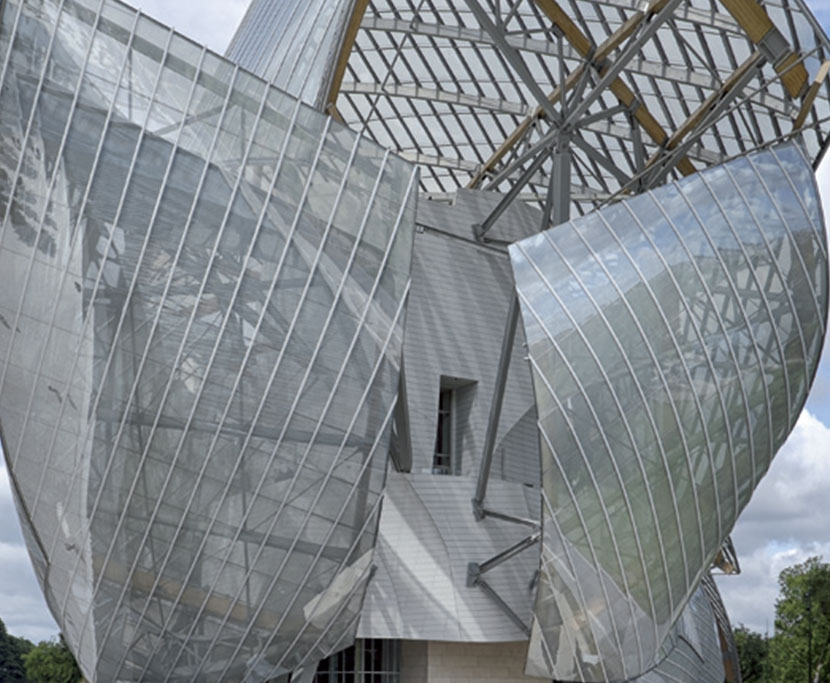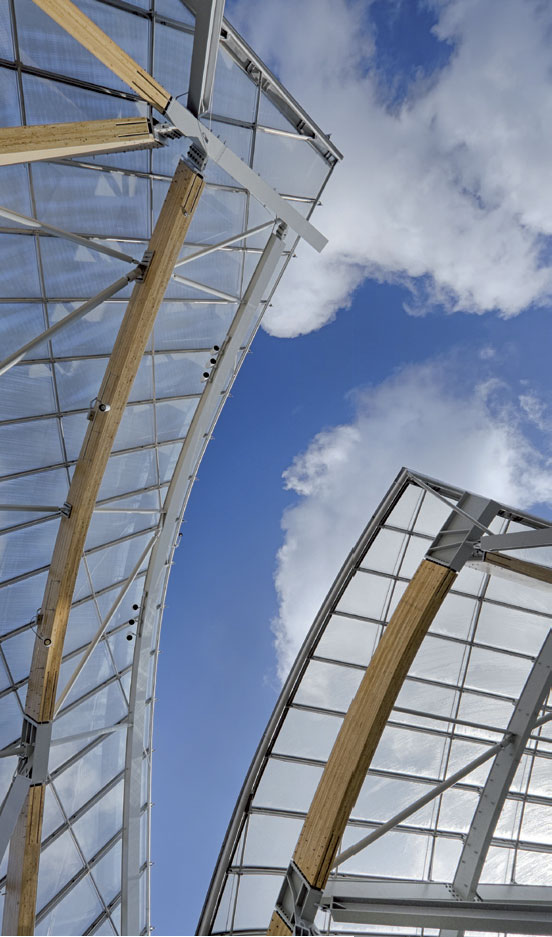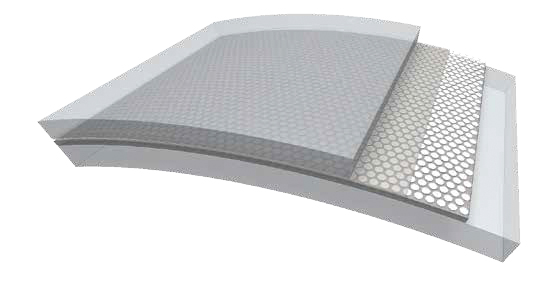Advanced Interlayer Solutions Division Projects The Fondation Louis Vuitton
ADVANCED INTERLAYER SOLUTIONS




Built at the behest of Bernard Arnault, a French businessman, art collector and chairman and Chief Executive Officer of LVMH, the building expands outwards from a central area into various galleries, referred to as chapels, with the whole structure covered by sails of white glass, inspired by the glass architecture of the end of the 19th century.
Designed by American architect Frank Gehry, the LVMH group created the Fondation Louis Vuitton to promote and support contemporary artistic creation for a wide French and international audience. It offers some 7,000 m2 of usable floor space, comprising 3,850 m2 of museum space, 11 exhibition galleries and a 360 to 1,000 seat auditorium.
In total there is over 13,300 m2 of glass roof area, comprising 3,600 unique panels, each exhibiting different bend radii (from almost flat to 3 m) and different bending orientation – from the primary perpendicular axes – of -90 to 90°. Almost all of them presented a fascinating challenge to the multifaceted architectural and engineering teams tasked with designing, fabricating, testing, validating and installing them.
Initial development work centred around the feasibility of actually constructing the 12 unique sails coupled with investigations into the physical formulation and appearance of the glass panels, all of which had to offer long-term durability for what is a project that relies a great deal on its striking aesthetics. Many factors were considered in the glass formulation, including the transparency/translucency, the colour, the coating and of course the all-important interlayer. Given the complexity of the sails and their multiple facets, all of which required unique geometries, glazing panels made using SentryGlas® were the obvious solution.
The major challenge was the creation of the unique geometries for each glass panel. Hot bent panels, fabricated using moulding were immediately dismissed as it would have meant an individual mould for each panel and this would have been prohibitively expensive. The cooling process would also have annealed the glass making it weaker than tempered glass and prone to breakage from thermal shock. Cold bending proffered a similar number of disadvantages, primarily due to the high degree of curvature demanded by some of the panels. The solution came from the latest glass-bending machines that can bend with various radii and temper glass panels without the use of moulds.
Applications
Region
Interlayer
Architect
Laminator
Engineer







Keep up with the very latest news in laminated glass innovations and procedures by subscribing to our free Laminated Glass News.
Subscribe here